
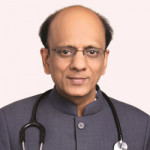 Dr. KK Aggarwal
Dr. KK Aggarwal
Sleep Apnea- Types, Symptoms and Treatment
Meaning | Types | Causes | Symptoms | Apnea Hypopnea Index (AHI) | Obstructive Sleep Apnea (OSA) | Treatment
What is an apnea?
When your breathing stops for at least ten seconds while sleeping is called apnea. Sleep apnea is a condition that is manifested by abnormal breathing during sleep. Individuals with sleep apnea have many extended pauses in breath as they sleep. These temporary breathing breaks can cause lower-quality of sleep and affects the body’s oxygen supply, leading to possible serious health consequences.
Sleep apnea is one of the most common sleep disorders and can affect children and adults of both sexes, though it is more common in men.
What Are the different types of sleep apnea?
Generally, there are three types of sleep apnea:
• Obstructive sleep apnea (OSA): It happens as the airway at the back of the throat gets physically blocked. And this obstruction causes temporary gaps during breathing.
• Central sleep apnea (CSA): It occurs due to a problem with the brain’s system that controls muscles involved in respiration, resulting in slower and shallower breathing.
• Mixed sleep apnea: When any individual has both OSA and CSA at the same time, it is mentioned as mixed sleep apnea or complex sleep apnea.

What are the causes of sleep apnea?
There are various factors that can increase the risk of blockage and result in sleep apnea as follows:
• Anatomical features: The size and position of an individual’s neck, jaw, tonsils, tongue and other tissue around the back of the throat can directly disturb the airflow.
• Obesity. Obesity or being overweight is one of the important causes of sleep apnea. Obesity can contribute to the narrowing of the airway and increase in weight can also increase the sleep apnea risk.
• Usage of sedatives medications or drugs and alcohol consumption can cause the tissue in the throat to relax, obstructing the airway.
• Family history – People having one or more relatives with sleep apnea are more likely to develop it themselves.
• People who smoke or are heavy smokers, can have sleep apnea at a higher risk than people who don’t smoke.
• Sleeping on your back can also relax the tissue around the airway causing blockages.
• People who have nasal congestion or blockage can likely experience sleep apnea.
• Hormone abnormalities such as hypothyroidism and acromegaly can increase the risk of sleep apnea by causing swelling of tissue around the airway.
• CSA is generally related to an underlying medical condition. For example, a stroke or infection of the brain damages the brain stem causing disturbances in the normal process of breathing.
• Heart failure is also considered to be a risk factor for CSA. Also, when a person’s oxygen levels drop if they are at high altitude, then CSA can occur.
What are the Symptoms of Sleep Apnea?
In general, all the three types of sleep apnea will have certain common symptoms:
• Interrupted breathing as the respiration can be labored or stop for few seconds to a minute
• Daytime sleepiness
• Headaches especially in the morning
• Irritable mood
• Difficulty in thinking
Most of the above symptoms are because of poor sleep and reduced oxygen levels that happens due to interrupted breathing.
Few additional symptoms related to Obstructive Sleep Apnea (OSA):
• Snoring, which is sometimes loud and includes gasping or choking, causing an individual to temporarily wake up
• Sore throat or dry mouth, especially in the morning
• Frequent urge to wake up to urinate
The most common symptom of OSA is chronic snoring, but it doesn’t mean that everyone who snores has sleep apnea. A person with sleep apnea is unaware of their breathing issues at night. They only find it out from a bed partner, family member, or a roommate. Excessive sleepiness during daytime is the most common symptom to be noted in people with sleep apnea.
What is a Hypopnea?
A hypopnea is a significant drop in airflow while sleeping causing a drop in blood oxygen saturation and then an awakening.
Apnea Hypopnea Index (AHI)
Apnea Hypopnea Index is the average number of combined hypopneas and apneas per hour. It is mostly used to assess the severity of an individual’s sleep apnea.
Respiratory Effort Related Arousal (RERA)?
Respiratory Effort Related Arousal or RERA is an event which causes an arousal or a reduction in oxygen saturation, without having an apnea or hypopnea.
An arousal is seen when the sensors that are measuring the brain activity, commonly known as EEG, shows that your brain waves are changing to alpha wave form. This means that you are woken up even though you don’t realize it. It is the repeated awakening of your brain due to a respiratory disturbance that lasts at least for 10 seconds and causes the damage from sleep apnea, irrespective of the type of event that is occurring or the breathing is paused completely or is a partial pause.
Obstructive Sleep Apnea (OSA)
Obstructive sleep apnea is generally divided into three categories: Mild, moderate and severe. Sleep apnea is termed mild, moderate or severe based on how many times the breathing stops while you are asleep.
According to the American Academy of Sleep Medicine, the AHI defines mild, moderate and severe sleep apnea:
• Mild sleep apnea is 5 to 15 on the AHI scale, which means you experience 5 to 15 periods of stopped or interrupted breathing every hour during sleep.
• Moderate sleep apnea is 15 to 30 on the AHI scale, which means 15 to 30 periods of stopped or interrupted breathing every hour during sleep.
• Severe sleep apnea is more than 30 on the AHI scale, which means your breathing stops or interrupted breathing more than 30 times every hour while you are sleeping.
What is Respiratory Disturbance Index (RDI)?
Respiratory Disturbance Index or RDI is the combined number of apneas, hypopneas, and RERAs every hour of sleep. Doctors who use this scale generally follow the same guidelines used for the apnea/hypopnea index (AHI).
What are the tests done to detect sleep apnea?
Tests to detect sleep apnea are as follows:
• Polysomnography – This is one sleep study, where you are hooked up to equipment that monitors brain, heart and lung activity, breathing patterns, arm and leg movements along with blood oxygen levels while you sleep. Polysomnography helps your doctor to diagnose any obstructive sleep apnea and then adjust the positive airway pressure treatment, if suitable.
• Home sleep apnea testing – In certain circumstances, your doctor will provide you with an at-home version of polysomnography to identify obstructive sleep apnea. This test involves measurement of airflow, breathing patterns, extremities movements, snoring intensity and blood oxygen levels.
What are the treatments available for Sleep Apnea?
For mild cases of sleep apnea, your doctor will recommend certain lifestyle modifications:
• Reduce weight if you are overweight.
• Regularly Exercise.
• Quit smoking.
• Drink alcohol in moderation.
• Use a nasal decongestant.
• Avoid sleeping on your back.
• Avoid taking sedative medications i.e., anti-anxiety drugs or sleeping pills.

In moderate to severe sleep apnea, your doctor may recommend other treatments as follows:
• Positive airway pressure – In this treatment, a machine delivers air pressure by a piece that fits into your nose or it is placed on your nose and mouth as you sleep. Positive airway pressure decreases the number of respiratory events that occur in sleep, reduces the daytime sleepiness and also improves the quality of life.
The most common treatment given is continuous positive airway pressure, or CPAP. During this treatment, the pressure of the air is continuous, constant and little greater than the surrounding air, enough to keep the upper airway passages open. This prevents obstructive sleep apnea and snoring.
• Mouthpiece (oral device) – Oral appliances are one more alternative for few people with mild to moderate obstructive sleep apnea. It helps to reduce daytime sleepiness and improve the quality of life. The devices are made in such a way to keep the throat open. Some other devices can hold your tongue in a different position.
If your doctor decides to explore this treatment option, then you will have to see a dentist experienced in dental sleep medicine appliances for the fitting and follow-up treatment.
Surgery or other procedures – Surgery is usually considered in severe sleep apnea and only if other treatment options have failed. It includes:
• Uvulopalatopharyngoplasty (UPPP) is a procedure in which the tissue from the back of your mouth and top of your throat is removed. Your tonsils and adenoids are also removed.
• Upper airway stimulation – A small, thin impulse generator is implanted under the skin near the upper chest. It detects the breathing patterns and, when required, stimulates the nerve that controls the movement of the tongue.
• Jaw surgery – The upper and lower parts of your jaw are moved forward to enlarge the space behind the tongue and soft palate.
• Surgical opening in the neck, known as tracheostomy – One might need this surgery if other treatments have failed and you are facing a severe, life-threatening obstructive sleep apnea.
Other types of surgery include:
• Nasal surgery is considered to remove the polyps or straighten a deviated septum
• Surgery to remove enlarged tonsils or adenoids

Dr. KK Aggarwal
Recipient of Padma Shri, Vishwa Hindi Samman, National Science Communication Award and Dr B C Roy National Award, Dr Aggarwal is a physician, cardiologist, spiritual writer and motivational speaker. He was the Past President of the Indian Medical Association and President of Heart Care Foundation of India. He was also the Editor in Chief of the IJCP Group, Medtalks and eMediNexus
More FAQs by Dr. KK Aggarwal
kanjeng69
https://www.seansprimedining.com/dine
slot gacor
slot demo
akang69
slot gacor
slot pulsa
slot pulsa
akang69
https://valentinesdaycountdown.com/
slot jepang
slot gacor
slot gacor
slot88
slot gacor
slot88
akang69
akang69
akang69
akang69
slot gacor
slot gacor
slot gacor
https://www.alpinecafeandbakery.com/menu.html
https://applebeesmenu.us/applebees-lunch-menu/
https://bakeryandsweets-fest.com/product-highlight/
https://sevenseassushi.com/menu/
slot gacor
slot777
https://freakout.club/
slot gacor
slot gacor
https://rsgm.moestopo.ac.id/instalasi-rawat-jalan/
slot gacor
slot pulsa
slot gacor
slot gacor
http://www.motohom.co.in/
slot pulsa
https://intervencion.uahurtado.cl/
slot pulsa
slot pulsa
https://www.kp2.it.maranatha.edu/
slot gacor
slot gacor
mahjong ways
slot gacor
https://azure3.test.utah.edu/
https://iceam.unimap.edu.my/
https://sindika.co.id/contact/
https://www.eduforum.spb.ru/program/
slot gacor
slot gacor
slot pulsa
https://jhep.unimap.edu.my/
slot gacor
Kartu Pokémon Naik Harga!! Penghobi Naik Drastis, Bermain No Limit Dapat Cuan Berlimpah
Resep Putar Hemat WD Paus di Sugar Rush, Murah Namun Ampuh!
Seseorang Terlihat Jauh Lebih Muda dari Usianya, 7 Game Big Bass Crash yang Menguntungkan
Tukang Bubur Demi Beli Honda Megapro Terbaru, Main PGSoft di Kanjeng Jadi Jutawan!
slot gacor
slot pulsa
https://portal.kaafuni.edu.gh/
https://www.thedeenshow.com/
https://elektro.trunojoyo.ac.id/
https://pgsd.trunojoyo.ac.id/
http://www.gmci.in/
https://www.medigunakhisar.com/contact/
https://www.medigunakhisar.com/category/doktorlar/
https://www.medigunakhisar.com/about/
https://www.oscarstores.com/
https://ritalabailaora.com/
https://journal.stiepertiba.ac.id/official/
https://shopifyvps.trackship.co/
https://krandeganbayan.id/
https://www.imik.edu.in/
https://www.natasshaselvaraj.com/
http://ebphtb.banjarnegarakab.go.id/
https://bigbiteonpitt.com.au/
https://sigen.kaltimprov.go.id/
http://rju.parco.gov.ba/
https://samajpragatisahayog.org/
https://bendismea.be.gov.ng/
https://mozaiktravel.id/
https://xm42newdev.wpengine.com/
https://epr.rw/
https://tribelio.page/slotpulsa
https://mhs.akpertgkfakinah.ac.id/
http://lms6.digivarsity.com/
https://ssr.vinayakamission.com/
https://prelnor.molg.go.ug/gallery/
https://englishfocus.upstegal.ac.id/
akang69
https://virtex.canadianminingexpo.com/
slot pulsa
slot bet 200
slot online
convocation.aiou.edu.pk/
https://qna.bpsaceh.com/
https://storage.therapyrooms.com/
https://www.inaexport.id/
https://vmrfdu.edu.in/
https://www.jniemann.it/
https://katalog.intanonline.com/view/
akang69
akang69
akang69
https://affordableadsgroup.com/
https://doktor.fisip.hangtuah.ac.id/
https://um.originmena.com/
https://primemarkets.com.sa/branches
https://primemarkets.com.sa/
https://www.aqtiverse.in/images/
slot gacor
https://rokomarifood.com/
https://beritrust.com/
https://dispora.sumbarprov.go.id/imgs/
slot pulsa
http://pubma.edostate.gov.ng/
https://palermo.if.ua/
akang69
slot qris
http://husc.hueuni.edu.vn/
https://www.grupogasca.com/
slot pulsa
https://ukm.stiedharmaputra-smg.ac.id/
https://ppid.mukomukokab.go.id/
slot gacor
https://s1cs.stmikroyal.ac.id/
https://terlaksana.co.id/img/
slot pulsa
https://graduation.sjctni.edu/SJCGRAD24/abc_id.php
https://admission.sjctni.edu/
https://camarabonitodeminas.mg.gov.br/oficios/
https://kmob.jabarprov.go.id/
https://ssm.school.ssmetrust.in/
https://cjnc.ppnijateng.org/
https://paisaje.age-geografia.es/
slot pulsa
hasilwin
demototo
http://majaslapa.lv/media/
slot gacor
https://sumpah.ppnijateng.org/
https://www.uniabuja.edu.ng/
https://training.super5.org/
slot pulsa
slot gacor
https://mmi.edu.pk/find-a-doctor/
https://lonsuit.unismuhluwuk.ac.id/
slot pulsa
slot gacor
https://taxicarudaipur.com/
slot pulsa
slot gacor
slot gacor
slot gacor
slot pulsa
https://siraberu.mixh.jp/
slot gacor
slot pulsa
slot gacor
https://hkg.methodist.org.hk/
slot gacor
https://www.asopa.org/
https://fisip.unismuhluwuk.ac.id/
slot gacor
https://www.panganku.org/id-ID/semua_nutrisi
https://ejurnal.ikippgribojonegoro.ac.id/
slot gacor
https://katalog.intanonline.com/view/
https://stikesgrahaedukasi.ac.id/
https://kec.slogohimo.wonogirikab.go.id/
https://www.facesulavirtual.net/efaces/
https://www.gratisongkir.id/
https://bukupdpi.klikpdpi.com/
https://ilp.mizoram.gov.in/
https://www.campdoha.org/
slot gacor
slot gacor
https://katalog.intanonline.com/
slot gacor
https://munabarat.go.id/index.php
https://youtube.klikpdpi.com/
https://katalog.intanonline.com/lazada.IM.im-msgbox
https://understandquran.com/
https://youtube.klikpdpi.com/
https://gratisongkir.id/console/
https://gratisongkir.id/vagrant/
https://www.gratisongkir.id/uploads/
https://www.gratisongkir.id/assets/
https://snyderfamilyband.com/
https://handholding.mizoram.gov.in/
https://dconline.mizoram.gov.in/
https://siva.umkendari.ac.id/
https://www.gthlcanada.com/
https://www.gratisongkir.id/assets/
https://www.vidyasthalilawcollege.com/
togel toto
slot gacor
https://www.facesulavirtual.net/
hasilwin
https://amertamedia.co.id/
https://www.gulfstarsauto.com/
https://aptika.id/
https://www.bytestechnolab.com/
slot gacor
slot deposit 10k
slot singapore
slot thailand
AKANG69
AKANG69
https://snyderfamilyband.com/
slot gacor
https://epaper.notunshomoy.com/
https://development.upr.ac.id/
https://fornas.kebijakankesehatanindonesia.net/
slot gacor
slot pulsa
https://e-anatolh.com/
slot gacor
slot thailand
slot pulsa
kanjeng69
https://loudhelp.com/
slot thailand
https://ipss-addis.org/
slot gacor
https://engineering.upstegal.ac.id/
slot gacor
https://sipaksi.unpak.ac.id/
https://pbi.teknik.unmuha.ac.id/
https://bkd.inkhas.ac.id/files/
https://barcode.akbidyahmi.ac.id/
https://sdcirebonislamic.cerdig.com/
https://tilganga.org/
https://siperjaka.ms-langsa.go.id/
slot pulsa
https://dinsos.bekasikab.go.id/
https://stkq.alhikamdepok.ac.id/
http://fmipa.upr.ac.id/
https://beasiswaperintis.id/
slot pulsa
slot pulsa
https://www.thebestflushingtoilet.com/
https://sdiassalaftahfidzulquran.cerdig.com/
https://sv-388.asia/
https://lppm.upr.ac.id/
https://peraturan.upr.ac.id/
https://simpeg-tb.id/
https://contentacademy.id/
https://ws-168.org/
slot pulsa
https://simpeg-tb.id/
https://www.lagrangepointsbrussels.com/
https://admisi.uinsaid.ac.id/img/
slot gatot kaca
https://www.multimarcasgrupovianorte.com.br/
https://silajara.kepulauanselayarkab.go.id/
slot pulsa
https://bapenda.batubarakab.go.id/run/
https://dosen.billfath.ac.id/sites/
gatot kaca slot
http://sibkd.semarangkab.go.id/ekgb/temp/
http://jak.faperta.unand.ac.id/sites/
slot pulsa
slot kamboja
https://dinsos.bekasikab.go.id/yasha/
http://agribisnis.faperta.unand.ac.id/
https://hondayogyakarta.id/
http://jak.faperta.unand.ac.id/sites/
https://dinsos.bekasikab.go.id/hunt/
https://dinsos.bekasikab.go.id/dagger/
http://tanah.faperta.unand.ac.id/potion/
https://dinsos.bekasikab.go.id/dagon/
https://dinsos.bekasikab.go.id/potion/
https://tourism.lgu-santol.gov.ph/
https://fdik.uinmataram.ac.id/rune/
https://v2.poltekpelni.ac.id/fiend/
https://simbada.kalbarprov.go.id/
https://slotpulsa2025.net/
https://slotindosat.net/
https://www.scootersforknee.com/
http://sibkd.semarangkab.go.id/sib/excel/
https://www.worldminner.com/
slot gacor
https://literate.nusaputra.ac.id/lib/
https://potomacofficersclub.com/wp-content/cache/
https://literate.nusaputra.ac.id/docs/
https://literate.nusaputra.ac.id/api/
https://www.idecesar.gov.co/images/
http://sim-epk.poltekkes-medan.ac.id/
http://sibkd.semarangkab.go.id/kartukorpri/pages/
http://sibkd.semarangkab.go.id/kartukorpri/pages/
https://buycapybara.com/
https://desasungaibuluhungar.id/
https://pgmi.unupurwokerto.ac.id/slotzeus/
https://pgmi.unupurwokerto.ac.id/slotthailand/
slot dana
https://admissions.kmtc.ac.ke/
https://permana.upstegal.ac.id/run/
https://permana.upstegal.ac.id/pages/run/
https://stkq2.alhikamdepok.ac.id/
slot pulsa
https://www.allnursejobdescriptions.com/
https://mbkm.uim.ac.id/wp-includes/images/
https://tinjukosimaling.baritotimurkab.go.id/
https://www.silenteye.org/
slot pulsa
https://upscpdf.com/img/
https://keusatker.badilag.net/file_import/
https://bisnis.poltekkesdepkes-sby.ac.id/wp-content/
Slot Bca
Slot Qris
Scatter Hitam
Slot Thailand
Slot Qris
Slot Thailand
Slot gacor
Slot pulsa
Slot zeus
Slot zeus
https://bisnis.poltekkesdepkes-sby.ac.id/wp-content/
https://gresikunited.com/run/
slot gacor
https://pusppm.poltekkesdepkes-sby.ac.id/file/
https://gameplayterbaru.com/
deposit pulsa indosat
https://jdih.tubankab.go.id/js/
https://jdih.tubankab.go.id/library/
https://jdih.tubankab.go.id/img/
https://jdih.tubankab.go.id/gallery/
slot thailand
https://epanel.cblu.ac.in/-/
http://bjkang14.postech.ac.kr/wordpress/
http://bjkang14.postech.ac.kr/wp-includes/assets/
http://bjkang14.postech.ac.kr/wp-includes/images/
https://arktisdesign.com/
https://www.allnursejobdescriptions.com/
https://ziare-online.com/
slot gacor
https://e-jazirah.com/
slot qris
https://www.ultimatepethub.com/
https://slotovo2025.com/
https://www.mobeyday.com/
https://staipati.ac.id/
scatter hitam
slot thailand
scatter hitam
akang69
akang69
akang69
slot qris
slot dana
mahjong ways 3
mahjong wins 3
https://assignmenthacks.com/
Slot Pulsa
Slot pulsa
Slot pulsa
https://acehpos.id/
https://archerysportsindia.com/
https://mrsavnpolytechnic.com/
https://nandanavanamorganics.com/
https://leeupvcsolutions.com/
https://lelaskinclinic.com/
slot thailand
https://thebharatschool.com/
https://mealsandmilemarkers.com/
https://ecustomssecure.com/
https://wallstreetenglish.edu.mm/
https://audio-constructor.com/
https://www.pulsaaxis.net/
https://www.akangseru.com/
https://ukrainemarriageguide.com/
akang69
https://www.akangseru.com/
https://catalinaislandbrewhouse.com/
slot shopeepay
slot shopeepay
10 situs togel
https://captionstore.com/
https://gettranslate.org/
https://terrariumtvultimate.com/
https://www.pryorok.com/
https://saralgyaan.com/
https://ginghameats.com/
slot shopeepay
https://gettranslate.org/
https://captionstore.com
https://enjoyislamabad.com
https://waveites.com
https://voicenusantara.id/
https://mmabreakdown.com/
https://bobmccoyart.com/
https://perpusdajawatengah.id/
https://ziggyoficialbr.com/
slot pulsa
https://linkr.bio/akang69/
https://dev.cfar.org/
https://saveursdailleurs.net/
https://joy.link/akang69
https://ponpesmodernal-imantebelian.ponpes.id/sites/
http://themockingbirdkc.com
http://akang699.kesug.com/
http://akang69.rf.gd/
https://www.ongrace.com/
https://my-home-zen-spa.com/
https://cebofil.org/
http://ironwooddesignstudio.com
https://cebofil.org/
https://pulsa-akang69.tumblr.com/
https://bandar-akang69.tumblr.com/
https://akang69daftar.tumblr.com/
https://sikelor.parigimoutongkab.go.id/vendor/agen-pulsa/
https://www.deviantart.com/slot-gacor-akang69/about
https://www.yuswohady.com/
https://indonesiaindustryoutlook.com/
https://bikeindex.org/users/akang69
https://rivielle.com/
https://issuu.com/akang69
https://heylink.me/akang69z
https://graphicography.id/slotbca/
http://oyannews.com/az/slotdemo/
https://www.laser-travel.com.np/
https://sim-epk.poltekkesjogja.ac.id/slotpulsa/
https://uddoktahoi.com/
http://www.lightcodes.net/
https://wave-gate.lightcodes.net/
https://pohwates-bjn.desa.id/slotdepo/
https://zabava.bluespot.hr/
https://bluespot.hr/
https://www.thethingsnetwork.org/u/akang69/
https://bikeindex.org/users/akang69/
https://www.masterassignment.com/
https://getyourexamdone.com/
https://www.penzion-miromar.cz/
https://sardogs.net/
https://king-lbent.com/
https://lamstyle.com/
https://pulsaindosat.us.com/
https://pulsaindosat.eu.com/
https://pulsaindosat.uk.com/
https://tamilmv.ws/
https://slotindosatt.com/





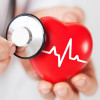

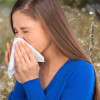

.jpg)

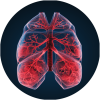
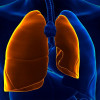

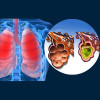
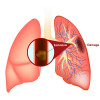
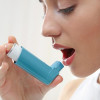

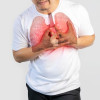

Please login to comment on this article